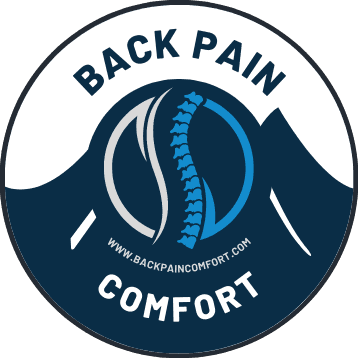
Sciatica pain can be incredibly debilitating, affecting your daily activities and quality of life. However, there are effective strategies to help you manage and reduce this pain.
In this blog post, we’ll explore seven essential tips that can provide relief and help you get back to feeling your best. From stretching exercises to lifestyle changes, these tips are designed to address the root causes of sciatica pain and promote long-term health. Let’s dive into these practical solutions to alleviate sciatica pain quickly and effectively.
1. Practice Gentle Stretches
Stretching is a key component in managing sciatica pain. Gentle stretches that target the lower back and hamstrings can help relieve tension and improve flexibility. Consider incorporating stretches like the seated spinal stretch or the reclining pigeon pose into your daily routine. These stretches can reduce the pressure on the sciatic nerve, helping to alleviate pain and discomfort.
2. Maintain Proper Posture
Poor posture can aggravate sciatica symptoms by putting additional strain on your lower back. Ensure that you maintain proper posture, especially when sitting for long periods. Use an ergonomic chair and place a cushion behind your lower back to provide extra support. Keeping your feet flat on the ground and your knees at a 90-degree angle can also help reduce sciatic nerve pressure.
3. Apply Heat and Cold Therapy
Alternating between heat and cold therapy can effectively reduce sciatica pain. Applying a cold pack to the affected area for 15-20 minutes can help reduce inflammation and numb sharp pain. Follow this with a warm compress or heating pad to relax tight muscles and increase blood flow to the area. This combination can provide both immediate and lasting relief from sciatica pain.

4. Engage in Low-Impact Exercises
Regular physical activity can help reduce sciatica pain by strengthening the muscles that support your spine. Low-impact exercises, such as walking, swimming, or yoga, can improve your overall flexibility and endurance without putting excessive strain on your back. These activities help to release endorphins, which are natural pain relievers, and promote faster recovery.
5. Consider Physical Therapy
If your sciatica pain persists, consulting a physical therapist can be beneficial. A physical therapist can design a personalized exercise program that targets the specific muscles causing your pain. They can also teach you proper techniques for lifting, bending, and sitting to avoid further injury. Physical therapy not only helps alleviate pain but also prevents future flare-ups.
6. Adjust Your Sleeping Position
The way you sleep can significantly impact your sciatica pain. Try sleeping on your side with a pillow between your knees to keep your spine aligned and reduce nerve pressure. If you prefer sleeping on your back, place a pillow under your knees to maintain the natural curve of your spine. These small adjustments can make a big difference in reducing nighttime pain and improving sleep quality.
7. Stay Hydrated and Eat Healthily
Staying hydrated and maintaining a balanced diet can also contribute to sciatica pain relief. Dehydration can lead to muscle cramps and increased pain, so drink plenty of water throughout the day. Eating a diet rich in anti-inflammatory foods, such as fruits, vegetables, and lean proteins, can help reduce inflammation around the sciatic nerve and promote healing.
Managing sciatica pain effectively requires a combination of lifestyle changes and proactive measures. By incorporating these seven essential tips into your daily routine, you can alleviate pain and improve your overall well-being. Remember, consistency is key, and with time and effort, you can significantly reduce your sciatica symptoms and enjoy a pain-free life.






